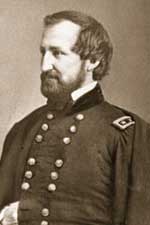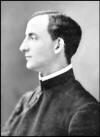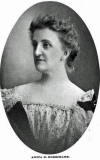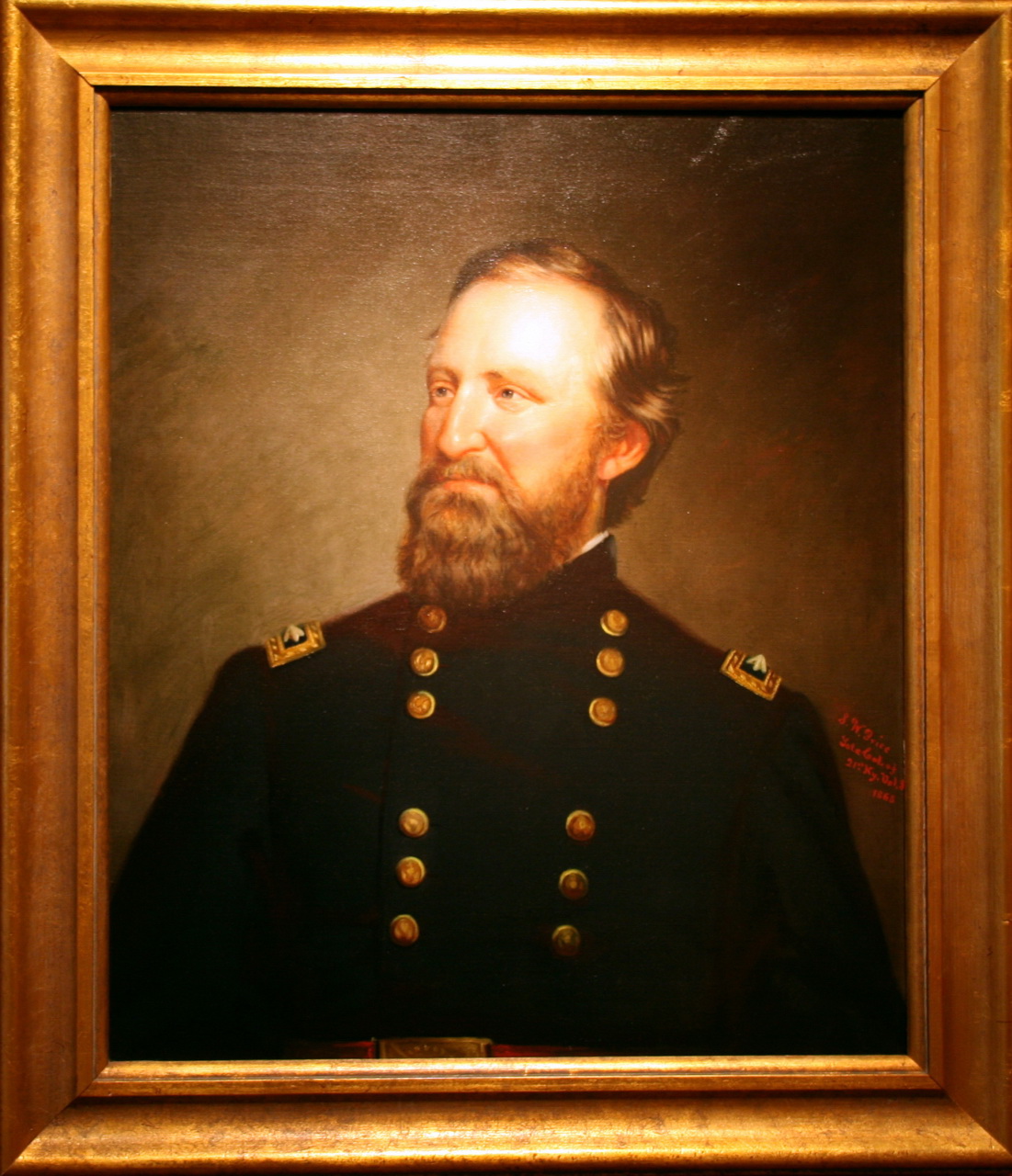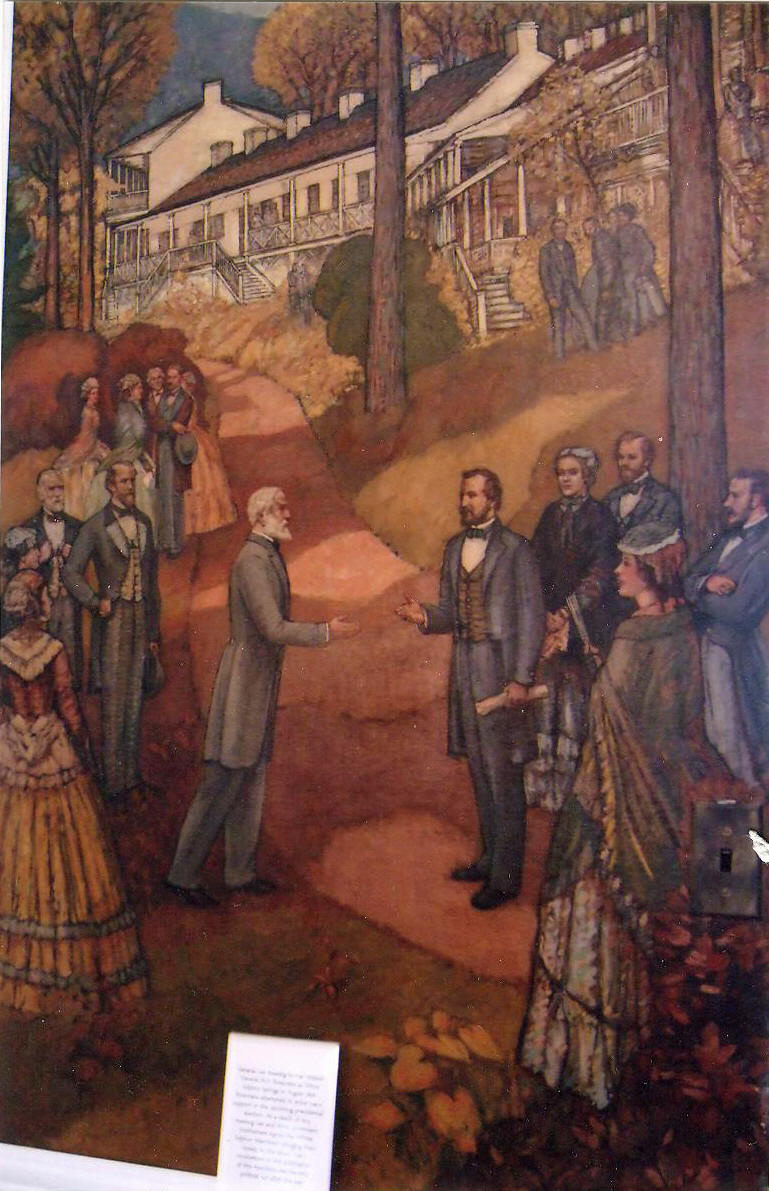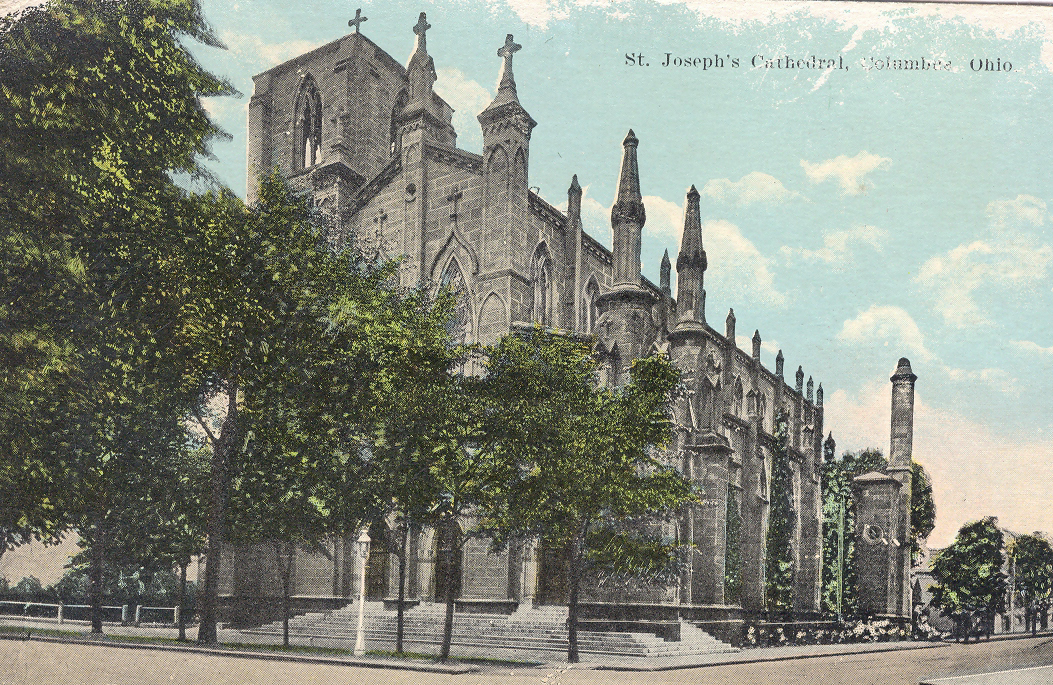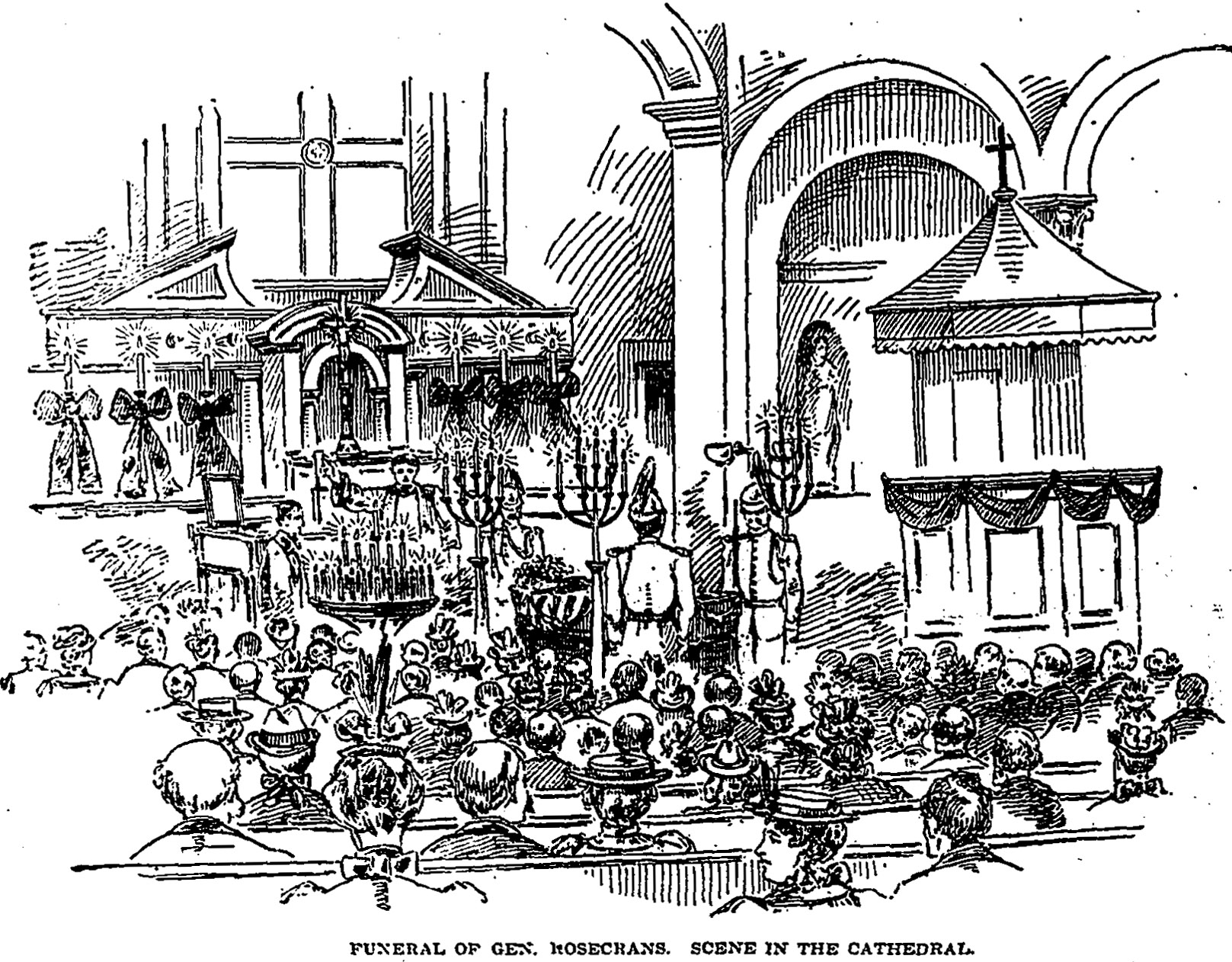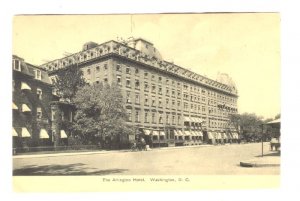| PART 5 | |||||||||||||||||||||||||||
|
Major General William Starke Rosecrans |
|
||||||||||||||||||||||||||
|
William and Anne's Family |
|||||||||||||||||||||||||||
|
The first two children born to Anne and William were boys. The first, William S. Rosecrans, II, died in infancy in 1845 at West Point. A second son James Addison also died as an infant between 1845 and 1848. |
|||||||||||||||||||||||||||
|
Adrian Louis Rosecrans |
|||||||||||||||||||||||||||
|
Adrian Louis was born May 28, 1849 in Newport, Rhode Island. He was educated at Mt. St. Mary's College in Cincinnati and at Notre Dame in South Bend, Indiana. Following college, Adrian worked with his father at a mine company near Stockton, California. In 1867, his spiritual reading so affected his
life he moved to New York City and entered the Paulists. His
classmates were Walter Elliott (a Union veteran), |
|||||||||||||||||||||||||||
|
Father Adrian |
|||||||||||||||||||||||||||
|
Father Adrian Rosecrans was ordained a Paulist priest, May 25, 1872. Never a healthy man, the rigors of missions took a toll on his health. He contacted malaria in May 1874. Father Adrian regained his health enough go on the 1874-75 mission to California with Deshon, a friend of his father's from West Point days. Father Adrian was a gifted writer and an
articulate speaker. In 1875, he fell ill again, retired from
mission work and began to write for The Catholic World.
During this time, he started a biography of the General but
did not finish it. |
|||||||||||||||||||||||||||
|
Mary Louise Rosecrans |
|||||||||||||||||||||||||||
 |
Mary Louise was born to William and Anne Rosecrans in Newport, Rhode Island. in 1851. Her childhood was spent in Cincinnati where her uncle Father Sylvester H. Rosecrans was a priest and later the President of St. Mary's College which was next door |
||||||||||||||||||||||||||
|
Mary went to school at the convent run by the Brown County Ursulines near Cincinnati. After completing her studies, she became Sister St. Charles and a professor in the school in 1875. She contracted tuberculosis in 1877 and died in just three years after being an Ursuline novitate. |
|||||||||||||||||||||||||||
|
Lily (Elizabeth) Rosecrans |
|||||||||||||||||||||||||||
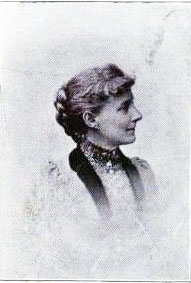 |
Lily Elizabeth was born April 21, 1854, in Cincinnati,
Ohio, right after her father resigned from military service.
She remembered her uncle Sylvester visiting their home as a child.
She made her home with her parents until her Washington
marriage to
Joseph Kemp Toole in 1890. |
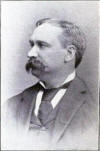 |
|||||||||||||||||||||||||
|
Governor |
|||||||||||||||||||||||||||
|
influence Montana. He was the first and fourth governor of
Montana. Joseph build a home for his bride.
Read about Lily's homes. Lily and Joseph became the parents of Rosecrans Toole, born 1891, Edwin Warren Toole, born 1893 and Joseph Porter Toole born 1896. |
|||||||||||||||||||||||||||
|
Joseph died March 11, 1929, in Helena and was buried in Resurrection Cemetery. Lily began to divide her time between Montana and California where her brother Carl resided. Lily died November 29, 1939, in Los Angeles, California, and was buried in Montana with her husband. |
|||||||||||||||||||||||||||
|
Anna Dolores, aka Anita Rosecrans |
|||||||||||||||||||||||||||
|
Anna Dolores was born in July 1857 in Wheeling,
(West) Virginia. She was the carefree playful child who loved
the outdoors, animals, and sports. She was a high spirited
child and always a favorite. She also had a great taste for
books and read David Copperfield when she was six. While
all of her
childhood was happy, she especially loved the time the
family lived in Cincinnati at "Roccbella." |
|||||||||||||||||||||||||||
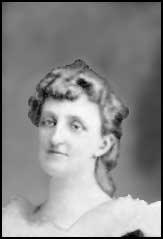 |
Once while their father was in California, there was a miserable looking old man who came very often for help and they thought he might belong to a gang. Seeing him approach one evening the Bishop remarked: "It is all right to give him food this time, but that man ought to have cold water thrown on him. " No sooner had Anna heard this, than she disappeared, and several minutes later, the tramp, who was seated on the kitchen doorstep, just beginning his supper, was surprised by a perfect deluge of water from the second story. Anna having given a quick literal interpretation of her uncle's advice. |
||||||||||||||||||||||||||
|
When Anna was young girl, the family went to Mexico. There she
became fluent in Spanish.
Anna also went to the school at the convent run by the Brown County Ursulines. She added French and German to her Spanish and studied music. Upon graduation she continued her music studies and enjoyed life with her many friends. After the death of her brother, Father Rosecrans and her sister Mary, an Ursuline novitiate, Anna decided she should make some grand sacrifice. She got permission from her parents to enter the Ursuline Convent in Brown County, Ohio where she became a nun and a teacher. Her health failed and she asked to be released of her vows and went to live with her parents as Anita. She
frequently spent long periods of time with her sister's family in
Montana. but would return to Washington D.C. with her parents.
After the death of her mother, she stayed with her father and served
as his hostess in Washington D.C. and then in California.
She authored children's book and started a biography of her father. |
|||||||||||||||||||||||||||
|
Carl Frederic Rosecrans |
|||||||||||||||||||||||||||
|
Carl was born in 1861 in Cincinnati. He
moved with his father when even possible. In 1869 the family
moved to California which became home base for the rest of his life.
He went to St. Ignatius College in San Francisco. |
|||||||||||||||||||||||||||
|
Gardena, San Pedro, Redondo were joined by railroad to Los Angeles through Carl's efforts. His friends said Carl was know for his generosity but he preferred to make his many donations anonymously. Anyone who ask him for help, received it. |
 |
||||||||||||||||||||||||||
|
Carl died suddenly on December 2, 1926 of heart failure in his office with his son, William S. Rosecrans III. William S, Rosecrans III earned his bachelor and master's degrees from St. Vincent's College which became Loyola University. He married Elizabeth Helm. they lived in Hermosa, Los Angeles County where William was a rancher 1920 and 30s. In 1922 who also entered the oil business He was already working with his father when he died. |
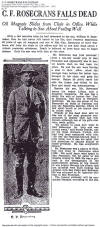 |
||||||||||||||||||||||||||
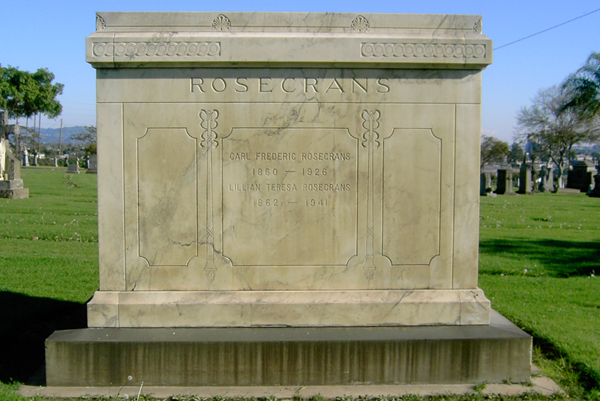 |
After Carl's death, Carmelita and her mother Lillian continued to live at 840 Rosecrans Avenue. In 1940 William and Elizabeth moved into the Rosecrans Avenue house and William managed the ranch., oil business and land development business. He owned and was president of William S. Rosecrans, Inc., and Rosecrans' Farms, Inc. | ||||||||||||||||||||||||||
| Carl's and Lillian's Marker | Carl's widow, Lillian, died in L.A. July 5, 1941. | ||||||||||||||||||||||||||
|
|
|||||||||||||||||||||||||||
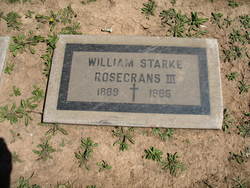 |
Markers in
Calvary Cemetery |
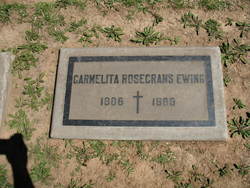 |
|||||||||||||||||||||||||
|
Charlotte Rosecrans |
|||||||||||||||||||||||||||
|
Charlotte Rosecrans, was born in Yellow Springs, Ohio, where the family resided with Mrs. Scammon while their husbands were fighting. The family caught whooping cough. The General was fighting in Mississippi when he received word that his wife was better but the baby Charlotte had died. |
|||||||||||||||||||||||||||
|
Rosecrans Moves to California |
|||||||||||||||||||||||||||
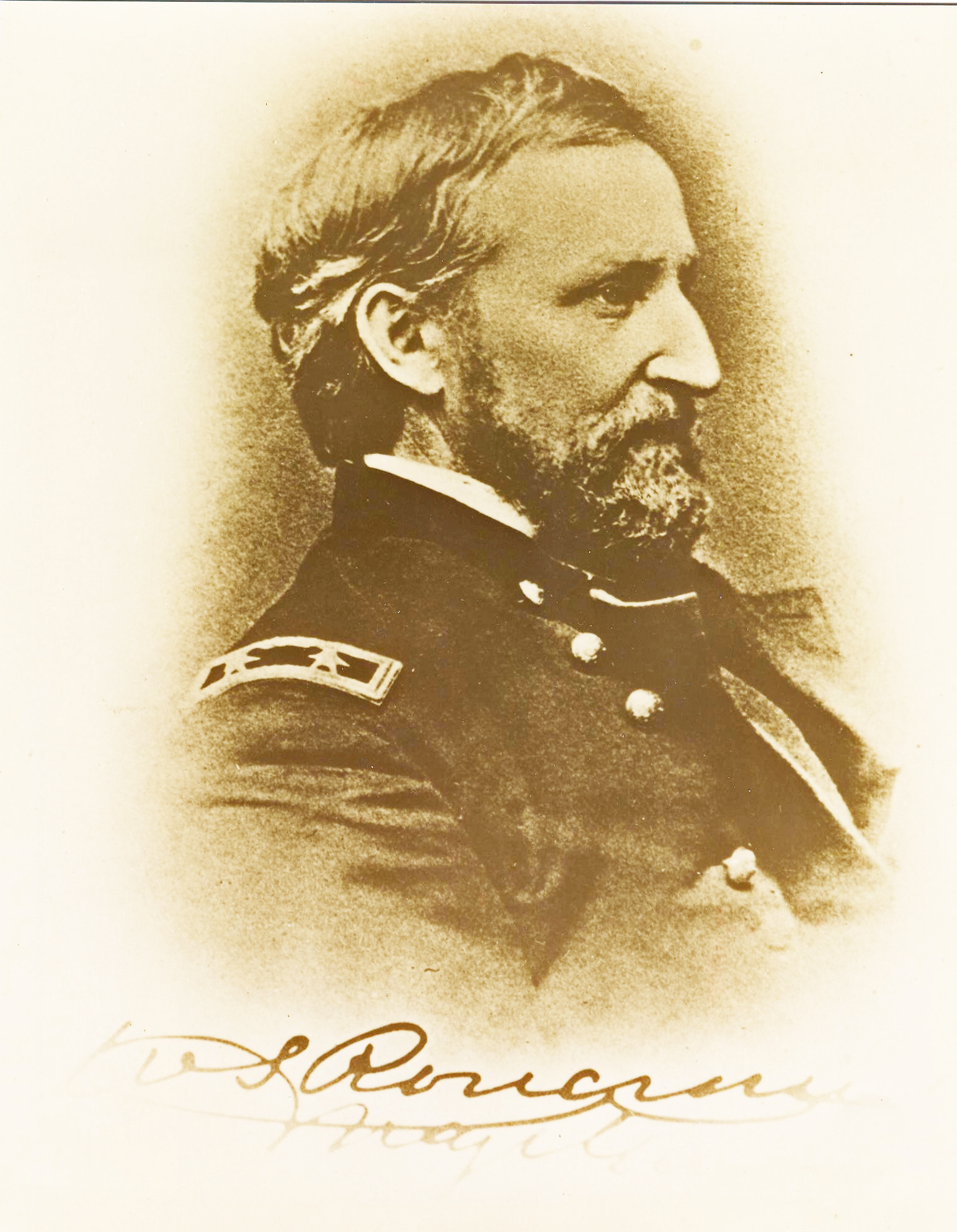 |
With the Civil War behind him, Rosecrans decided to get his finances
in order and then bring charges of conduct unbecoming an officer
against Grant. Back in civilian life the General discovered
his partners had frozen him out of the refinery in Cincinnati so
he went to California to concentrate on mining and railroads.
He often kept several projects going at the same time. Following a hero's welcome of bands, fireworks and a parade to honor him, on July 30, 1865, Major General Rosecrans gave a speech in the Occidental Hotel at Bush and Montgomery streets in San Francisco. Following his declaration of love for the great free republic and challenging all to maintain its honor and its flag to transmit its glorious legacy to our children. He urged the people to see that the moral, intellectual, material and political development of the nation be worthy of the resources and institutions with which Providence blessed it. |
||||||||||||||||||||||||||
|
Rosecrans continued, "I want to see one or more iron bands
extending across this great metropolis of the Pacific with the
distant shores of Maine. I want to hear the shrill whistle of
the locomotive wake up the echoes of the Rocky Mountains and the
solitudes of the great interior desert." |
|||||||||||||||||||||||||||
|
Southern Pacific Railroad |
|||||||||||||||||||||||||||
|
In 1865 Rosecrans was one of the 11 incorporators of the Southern Pacific. With the completion of the Union Pacific his stock became valuable. Because he was often gone and did not trust his partners, Rosecrans hired a judge to watch out for his interests. The other stockholders issued a levy against the stock and advertised it in a small newspaper with only 200 readers - the judge was not one so Rosecrans was not alerted, he did not pay the fee so his stock was auctioned and his partners bought him out. |
|||||||||||||||||||||||||||
|
Railroad to San Diego |
|||||||||||||||||||||||||||
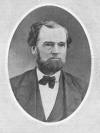 |
In 1867 Rosecrans heard Alonzo Horton speak about the future of San Diego. He was fascinated and made arrangements to visit the area. Following his tour, Rosecrans told Horton the land could be very valuable if a railroad was built east through Jacumba Pass. Horton was so pleased be gave Rosecrans Lot 70 bordered by F, G, 5th and 6th Streets - one city block of San Diego. He helped form the San Diego Gila Southern Pacific and Atlantic Railroad company. Rosecrans was appointed president. He soon found the peace time government was not as interested |
||||||||||||||||||||||||||
|
Alonzo Horton |
in railroads as the wartime administrations had been. |
||||||||||||||||||||||||||
|
In 1869, Rosecrans sold his land back to Horton for $2000 gold coin. |
|||||||||||||||||||||||||||
|
Appointed Minister to Mexico |
|||||||||||||||||||||||||||
| On July 7, 1868 President Johnson appointed Rosecrans Ambassador to
Mexico
The French had overthrown the Mexican government in 1863 putting Maximilian as Emperor of Mexico. and were planning to invade the United States through the Mexican border. In 1866 the U.S. sent troops to guard the border along the Rio Grand River. Eventually in 1867 Maximilian was executed and Benito Juarez was once again made president of Mexico. Rosecrans was sent in to help the country get back on its feet. He felt Mexico needed "peace, immigration and railroads" to succeed. He began a correspondence with France’s Emperor Louis Napoleon III (Napoleon Boneparte’s nephew) which was to last a lifetime. |
|||||||||||||||||||||||||||
|
Portrait painted by Samuel Woodson Price in 1868 |
|||||||||||||||||||||||||||
|
Rosecrans proposed payment of the Mexican debt through land and railroad grants since the country was bankrupt. He proposed to link Mexico City with New York through El Paso and to Guadalupe to Acapulco and Mazatlan. Rosecrans and Robert Symon bought property inland from Tuxpon where the planned terminus would be located. Acting on behalf of a powerful railroad consortium, he sought a railroad concession from El Paso to Guaymas for the Mexican National Railroad. Rosecrans and his principal associates in Mexican real estate Brink Symon and William Mackintosh, bought the Yrriate family rights to Hacienda Estaca, an estate of several hundred acres, for a colonization project. Seeing an infusion of capital, railroad service and mines, President Juarez agreed and gave them 2 years of unlimited power to form the [colonization] company. Rosecrans was given 54 percent of the mineral rights and land concession as personal property. However Vice President Lerdo opposed the concession ending the deal. However, Rosecrans did gain part of the grant which he sold years later to others in San Francisco for timber and mining enterprises. Rosecrans family journeyed to Mexico with him. While they was there his mother-in-law, Eliza Hegerman, died in Mexico. His bother, Sylvester, was named Bishop of the Diocese of Columbus in 1868. Rosecrans wanted to uplift the Mexicans, their economy and their civilization, noted Hart but most of his backer were in for their own gain and considered the Mexicans inferior. In 1869 bondholders and railroad men lobbied the U. S. government for help in gaining their concessions and collecting on Mexican debts. Brink, a disgruntled bondholder and supporter of the more ambitious railway project promoted by Rosecrans met with President Grant, Secretary of State Hamilton Fish and Chief Justice Chase. As a result Grant invested. Later Carlos Merighi, one of the men backing Rosecrans also interviewed Grant and Secretary of War John A. Rawlins. He warned Rawlins that Vice-President Lerdo, being a bad man, disliked Rosecrans and was opposed to the Americans. Lerdo did oppose the shore to shore railroads on the grounds Mexico would lose its independence. Rosecrans was also interested in mining in Mexico. He could have bought the Mina Blanco Y Colorado mine in Sonora, Mexico, for $300,000. The following year it sold for $1,000,000 and three years later for $2,000,000 in 1881. |
|||||||||||||||||||||||||||
|
White Sulphur Springs Manifesto |
|||||||||||||||||||||||||||
| In August 1868, Rosecrans met with Robert E. Lee and other ex-confederates to work for unity and support in the upcoming elections. The White Sulphur Springs Manifesto is featured as a mural at the Greenbrier Hotel in White Sulphur Springs, West Virginia. | |||||||||||||||||||||||||||
|
The newspaper was quick to point out that General Rosecrans was not in West Virginia on Mexican business but on a railroad matter. A
letter from General Robert E. Lee to Rosecrans tells
how the South has accepted the terms of the surrender, abolished
slavery and is treating the the former slaves with kindness
realizing they are important to the economy of the south. |
|||||||||||||||||||||||||||
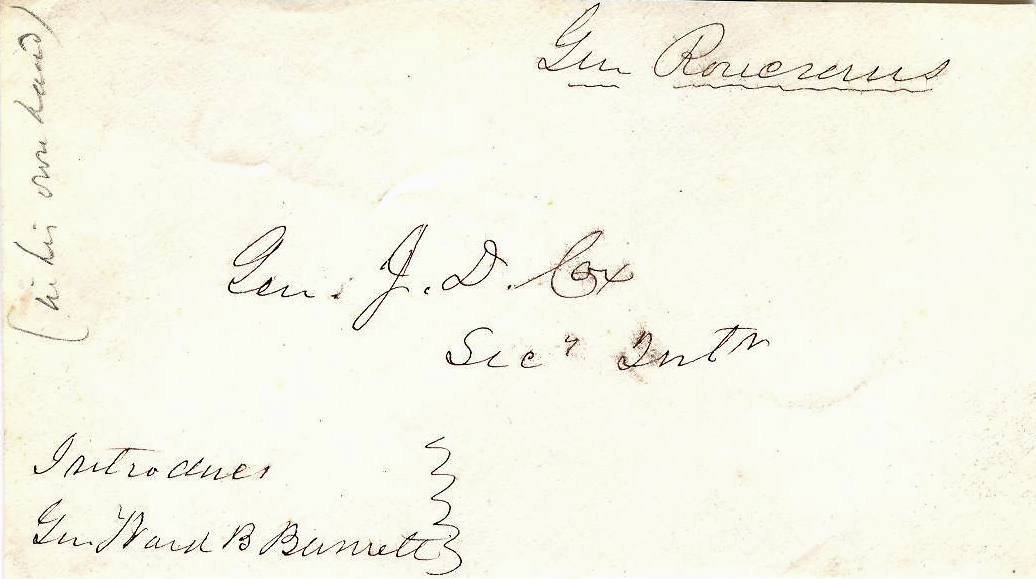 |
Letter of Introduction to Secretary of the Interior |
||||||||||||||||||||||||||
| Throughout the remainder of his life, General Rosecrans wrote many letters supporting veterans looking for positions or pensions | |||||||||||||||||||||||||||
|
Buys Land in Los Angeles |
|||||||||||||||||||||||||||
| In 1869 President Grant terminated Rosecrans appointment to Mexico. Rosecrans was the first to apply for the concession to built a narrow gauge railroad and a telegraph system across Mexico | |||||||||||||||||||||||||||
 |
He built a comfortable house in San Raphael and in 1869 Rosecrans purchased 16,000 acres of the Rancho San Pedro for $2.50 an acre which became known as "Rosecrans Rancho". |
||||||||||||||||||||||||||
| The Gardena Valley News ran an article by James Osborne about the early Rosecrans' home. It is worth your time to read it. | |||||||||||||||||||||||||||
|
Though this 25-square-mile tract of land was flat and fertile, it was considered to be of no value, possibly because it lacked springs. In 1870, Rosecrans sold part of the land $50 per acre and divided into parcels which became Gardena. Still the developers did not realize how valuable the land would one day become. See map showing the location of this property. Los Angeles circles the entire area. Rosecrans kept the Rancho Sausal Redondo, near Los Angeles. |
|||||||||||||||||||||||||||
|
The Great Decliner |
|||||||||||||||||||||||||||
|
When a man is as popular with the people as Rosecrans, it is inevitable he will be wanted as a candidate for public office. Rosecrans had charisma, a military presence, and multitude of followers who served beneath him in the Civil War and would still stand with him. It is interesting to note that while many in the Civil War were concerned that Rosecrans had political aspirations his life shows he did not. He was one of the most popular generals of the Civil War and could easily have won an election but declined to run. |
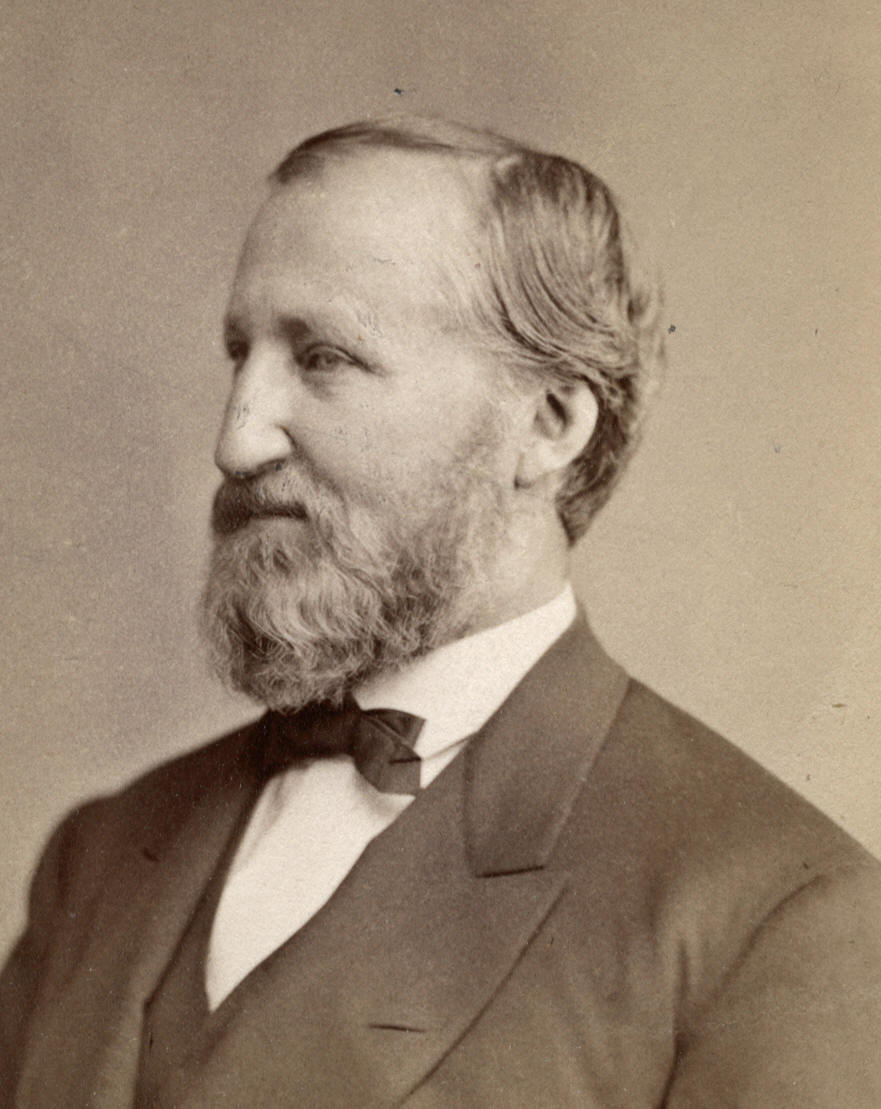 |
||||||||||||||||||||||||||
|
The following are documented events in which Rosecrans was ask to run for public office: |
|||||||||||||||||||||||||||
|
President or Vice President |
|||||||||||||||||||||||||||
|
In James Gilmore's biography of Lincoln he tells of Horace Greeley sending him to interview Rosecrans about serving as Lincoln's running mate. Rosecrans said they are mistaken about Mr. Lincoln. He is in this right place. I am in a position to know and if you live you will see that I am right about him." Lincoln probably did not know about the inquiry made above but he probably knew Garfield telegraphed Rosecrans offering him to opportunity to be Lincoln's running mate. Rosecrans was a staunch Democrat and not sure he could support all the Republican ideas so he hesitated before sending his reply and the position was offered to Johnson. Garfield never did get Rosecrans' reply telegram. |
|||||||||||||||||||||||||||
|
Ohio Governor in 1866 and 1869 |
|||||||||||||||||||||||||||
| The Union Party of Ohio nominated him to run for Governor of Ohio in 1866, The Democrats ask him to run for Governor of Ohio in 1869. He declined both. Besides he was moving to California. | |||||||||||||||||||||||||||
| Directorship of the San Francisco Mint | |||||||||||||||||||||||||||
|
He turned it down in 1867. This is one position he later wished he had taken because he developed definite ideas to for improvement of the system including the high rate of interest charged on Government bonds, and the idea that bank notes should be paid in coin upon demand. |
|||||||||||||||||||||||||||
|
California Governor in 1868 |
|||||||||||||||||||||||||||
| The Democratic Party nominated Rosecrans to run for Governor of California in 1868 | |||||||||||||||||||||||||||
|
Mayor of San Francisco in 1876 |
|||||||||||||||||||||||||||
| Rosecrans was asked to run as the working man's candidate but declined. | |||||||||||||||||||||||||||
|
Congressman from Nevada in 1876 |
|||||||||||||||||||||||||||
| The
Democrats wanted Rosecrans to run for Congress
in 1876 but he declined. Although Rosecrans chose not to run for public office, his wisdom was often sought. In 1867 he attended a Union Party meeting in California and was forced to speak to the group by public demand. He made it clear he was interested in the reconstruction of the south rather than the local interests of the party. The political party system as we know it today was very different from the mid 1840s through the war years. People switched parties and parties changed as people worked for position in the governments. However this article shows his continued compassion for the ordinary citizens inconvenienced by war. Remember he went back to help those in western Virginia when the states divided and later he will help Nevada. His strong religious conviction which is often criticized was probably guiding him at these times. |
|||||||||||||||||||||||||||
|
Co-Author of "Popular Government" |
|||||||||||||||||||||||||||
|
In 1878 the booklet, Popular Government: a new and simple plan to make ours effectively a government "of the people, by the people and for the people," was written by Josiah Riley and William Starke Rosecrans. It was written as ideas for amendments to the constitution of Nevada. Much of the booklet deals with election reforms which are now used throughout the states. |
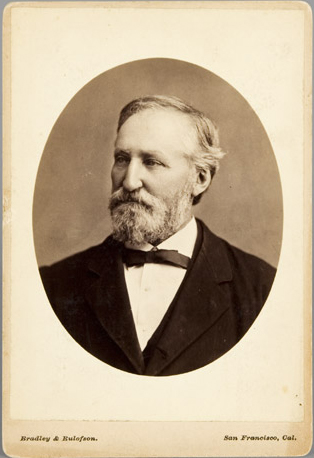 |
||||||||||||||||||||||||||
|
San Jose Mining Company in Nevada |
|||||||||||||||||||||||||||
|
The geologist in Rosecrans was eager to get back into mining. He formed a partnership with Bart O’Connor and they formed the San Jose Mining Company in Egan Canyon, Nevada, in 1872. Once a Civil War army post had been there but all that was left was a Civil War Cemetery. They built a 20 stamp mill run on water power and saw a return of $400.000 on their $250.000 investment when the mine closed in 1883. |
|||||||||||||||||||||||||||
|
Railroads in Mexico |
|||||||||||||||||||||||||||
| 1872 found the General back in Mexico working on railroad legislation. For the next couple of years Rosecrans planned narrow gauge railroads for Mexico. He and his son Carl worked on these through much of the rest of his life. Apparently Rosecrans put some pressure on his friend President Rutherford B. Hayes to consider annexation of parts of Mexico. | |||||||||||||||||||||||||||
|
Safety Powder Company |
|||||||||||||||||||||||||||
|
After Alfred Nobel got a patent for dynamite in 1868, mining took on a new roll. Powder companies sprang up all over California. Rosecrans developed a patented fuse cutter. In 1875 he opened the Safety Powder Company in Los Angeles to manufacture blasting powder and mine blasting caps. In 1878 when competitors set their cost at 1/4 of Rosecrans’ cost, he decided it was time to leave the business. |
|||||||||||||||||||||||||||
|
Veterans' Groups |
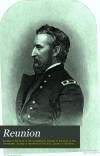 |
||||||||||||||||||||||||||
|
Following the Civil War, veterans groups began to organize and hold reunions. In addition to the camaraderie these groups worked for benefits for the soldiers and their families. The first Society of the Cumberland met in Cincinnati in February
6, 1868.
General Thomas served as president of the Society. Rosecrans sent his regrets in a letter speaking fondly of all his
friends who would be there. |
|||||||||||||||||||||||||||
| The Third Reunion of the Society of the Cumberland was held in
Indianapolis. General Rosecrans addressed the group. His
speech
begins on page 72.
General Thomas died before the Fourth Reunion in November 1870 in Cleveland. General Rosecrans, who had been the first Vice President was elected President by acclamation. |
|||||||||||||||||||||||||||
|
|
When Rutherford B. Hayes, who was also born in Delaware County, became President of the United States he held a reunion of the 23rd Ohio Volunteer Infantry at his home in Fremont, Ohio on September 14, 1877. Rosecrans went to Ohio hoping to be assigned the directorship |
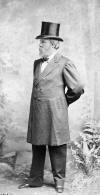 |
|||||||||||||||||||||||||
|
or perhaps a ministry to another country. President Hayes introduced him saying "Among the men of Ohio who were most distinguished, perhaps there is none more so for personal gallantry than the general I am about to introduce, by his courage and his personal heroism saved the day in those great decisive battles. He was the first Colonel, and with pride the 23rd men always said it, he was the best man of the 23rd Ohio." No appointments were offered. |
|||||||||||||||||||||||||||
|
Death Hits the Rosecrans Family |
|||||||||||||||||||||||||||
|
Adrian Louis Rosecrans, 1876 |
|||||||||||||||||||||||||||
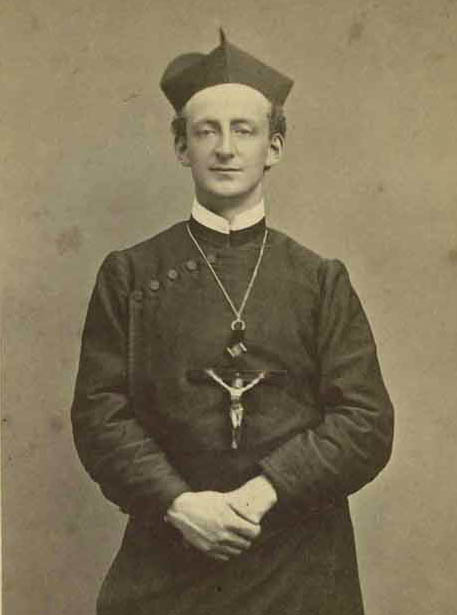 |
1876-79 were very hard on the entire Rosecrans family. Rosecrans’s oldest surviving son, Adrian Louis Rosecrans who had followed in his uncle Sylvester’s footsteps and was ordained a priest in the Paulist movement in 1872, had gotten malaria. Father Adrian's health continued to decline, he died at the home of Thomas O'Connor in 1876 at the age of 26, just four years after his ordination.. It is interesting to note Thomas' son Charles sold his Lake George estate to the Paulists and was the attorney for Confederate President Jefferson Davis when he was tried for treason. |
||||||||||||||||||||||||||
|
His uncle, Bishop Rosecrans, gave his Requiem Mass in St. Paul the Apostle Church in New York. He is buried in the crypt under the church. |
|||||||||||||||||||||||||||
|
Mary Louise Rosecrans, 1877 |
|||||||||||||||||||||||||||
| Just a year after her brother died, Mary Louise Rosecrans, known as Sister Charlene, died of tuberculosis in the convent of the Brown County Ursulines at the age of 26. | |||||||||||||||||||||||||||
|
Bishop Sylvester Horton Rosecrans, 1878 |
|||||||||||||||||||||||||||
|
The Bishop and the General had always been close even though their
choice of vocations were very different. When the General was
fighting Sterling Price at Corinth in the Civil War, someone
commented about this to Father Sylvester who replied, "While the
General is wielding the sword of the flesh, I trust that I am using
the sword of the Spirit. He is fighting the rebels, and I am
fighting the spirits of darkness. There is a difference:
he is fighting with Price, while I an fighting without price."
The General was never wounded in battle but Sylvester was shot while serving the Lord in Cincinnati. He was a member of the faculty of Mt. St. Mary Seminary in Price Hill. One evening while returning home from a trip to St. Peter's Cathedral , Father Sylvester was held up and wounded by a footpad as he walked up Warsaw Avenue hill. Perhaps the thug recognized his victim as a clergyman because he ran away. Fortunately for Father Rosecrans, the bullet wound was not serious and he calmly proceeded on his way to the Seminary where he was given first aid and medical attention. |
|||||||||||||||||||||||||||
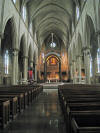 |
After the war, when Sylvester was appointed the first Bishop of the Columbus Diocese, the General was pleased to be able to go over the plans for the new St. Joseph’s Cathedral to be built in Columbus, Ohio. Many of the General's suggestions were incorporated into the facility when the corner stone was laid in 1868. |
 |
|||||||||||||||||||||||||
|
|
|||||||||||||||||||||||||||
|
An early 1900s postcard
from
George Campbell at
TallGeorge.com |
|||||||||||||||||||||||||||
|
Designing the cathedral had been a small part in the overall
construction. Sometimes three years went by without any work
on the facility. When it was completed, there was a major debt
but Bishop kept telling his following God would provide. The Bishop
deprived himself of all but the necessities for life and his health
began to fail. |
|||||||||||||||||||||||||||
|
Congressman from California |
|||||||||||||||||||||||||||
|
Finally in 1880, the Great Decliner changed his mind and ran as a Democrat for the Forty-seventh Congress from California and won 21,005 against 19,496 of his Republican opponent He was reelected in 1882 and was appointed to Chair the Committee on Military Affairs. |
|||||||||||||||||||||||||||
| Grant’s pension came before the house for a vote and Rosecrans voted against it calling it a ‘proposition to reward Grant for his distinguished military service.’ Rosecrans said he could not vote for it because when ‘true history is written that service would be pared down to very different dimensions.’ Despite his objections the bill passed. |
 |
||||||||||||||||||||||||||
| William Loses His Beloved Wife | |||||||||||||||||||||||||||
| On Christmas 1883, Ann Eliza Hegeman Rosecrans died, probably of cancer. She was buried in Mount Olivet Cemetery in Washington. D. C. The General's friend Lt. Col. Julius Garesché is buried nearby. She had out lived five of their children and did not live to see the addition of any grandchildren. | |||||||||||||||||||||||||||
|
Grand Army of the Republic |
|||||||||||||||||||||||||||
| Another veterans' group which formed
after the Civil Was was known as G.A.R. General Rosecrans who
had often kept his staff up at night discussing theology during the
war, helped found the Grand Army of the Republic. He was always
proud of this organization which stood for Fraternity, Charity
and Loyalty and often signed his letter "In
F. C. and L." The first labor union, Knights of Labor formed during the end of the century and was very attractive to many Catholics. The Catholic Church was telling its members not to join any 'secret societies' since it viewed the rites of these groups as substitute religions. When Rome's inclination was to decline membership in the union, Cardinal Gibbons, the Archbishop of Baltimore intervened and wrote to Rome requesting that he be allowed to monitor activities of the Knights of Labor. Veterans became concerned about their membership in G.A.R. In 1884, when the group held its meeting in Portland, Maine, the Commander-in-Chief John S. Kountz addressed the G.A.R.. He told of appointing a committee, consisting of Comrades W. S. Rosecrans, California; M. T. McMahon, New York and J. C. Linehan, New Jersey, to lay the nature and work of the Grand Army of the Republic before the proper Catholic Ecclesiastical Authorities of the United States, and the chairman, Comrade Rosecrans, had reported to him: "That in fulfillment of this duty, I corresponded with the other members of the committee, and thereupon addressed letters to the Primate, the Most Rev. Archbishop Gibbons, of Baltimore, and archbishop Ryan, of Philadelphia stating to them than while we do not expect to ask any endorsement or ecclesiastical approval of our Society, we were anxious to have its nature so understood that it might be known to all confessors that Catholics might, lawfully and with good conscience, be members thereof. Rosecrans noted, "In response to their kindly
suggestions, I furnished ample explanations, written and printed,
showing that our association was for the noble objects of
cultivating among its members the spirit of Fraternity, Charity and
Loyalty, and to its nature temporary. I also conversed with other
archbishops, bishops, and theologians and have the pleasure to
inform you that it was the opinion of everyone with whom I conferred
that the Society of the Grand army of the Republic, as now
organized and conducted, is not, in the ecclesiastical meaning of
the phrase, “a secret society.” and that Catholics may, with all
good conscience, belong to it. Kountz went on to say the Church of the United Brethern, in Conference, decided that there is no objection to their members uniting with the G.A.R. and he was advised that the United Presbyterians have left the matter to the conscience of their individual members.
|
|||||||||||||||||||||||||||
|
Return to Delaware County |
|||||||||||||||||||||||||||
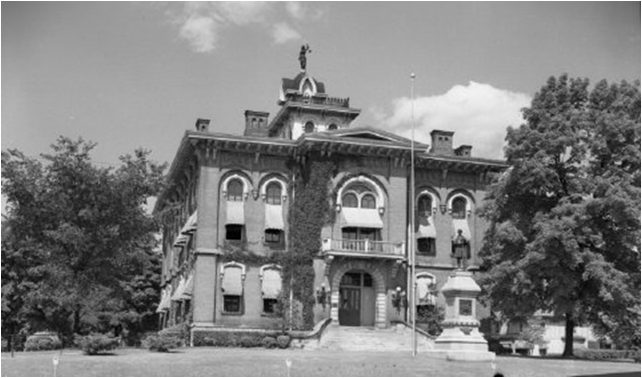 |
|||||||||||||||||||||||||||
|
Photo from the Delaware County Gealogical Society Website |
|||||||||||||||||||||||||||
|
In May 1884 General Rosecrans journeyed to Delaware, Ohio, for
the Decoration Day Ceremony at the Soldiers Monument in front of the
Courthouse. John Beatty who was also an honored guest noted, "The
General is in splendid health, and was in the best of humor. He said
he did not propose to make a speech at Delaware, but would simply
give a free and easy talk to his old neighbors, and went on to say
that he remembered the town very well." Beatty told of the caravan
going from the train that noon. |
|||||||||||||||||||||||||||
|
15th Annual Reunion of Graduates of West Point |
|||||||||||||||||||||||||||
| On June 13, 1884, Rosecrans addressed the group of former West Point graduates in New York. The program contains the list of members and obituaries for those who have died since the last meeting | |||||||||||||||||||||||||||
|
History Sells Tobacco |
|||||||||||||||||||||||||||
| General Rosecrans was so popular his life story and picture were used to sell items to the public. This advertising card for the Duke Tobacco Company was published around 1887. While it has some errors in the story, it made a nice collectible for the children of veterans who remembered the commander of the Army of the Cumberland fondly. Collectible cards were popular in the 1940s. |
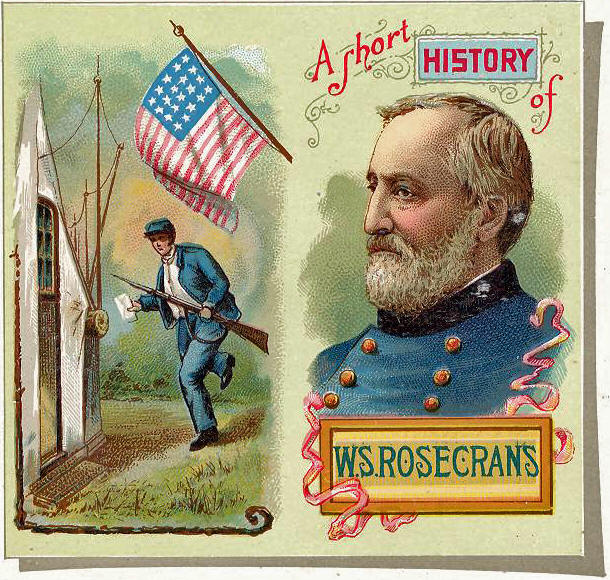 |
||||||||||||||||||||||||||
|
In 1889, a bill was introduced into the House to restore Rosecrans' rank and place on the retired list. Although some were in opposition because he had refused to vote for Grant's retirement, the majority including many Republicans still held him in high esteem. Republican David Henderson of Iowa noted, "We can afford to forget what General Rosecrans said. we cannot afford to forget what he did." The bill concluded by saying it would be a "solace to him in his declining years to be made the recipient of this evidence of the country's gratitude. It passed on February 22, 1898. |
|||||||||||||||||||||||||||
|
Register of the Treasury |
|||||||||||||||||||||||||||
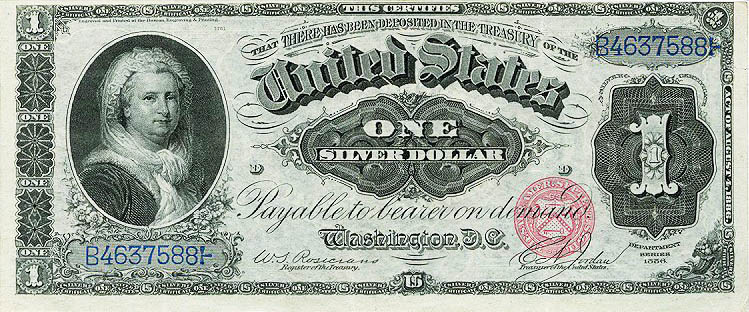 |
|||||||||||||||||||||||||||
|
Silver Certificate signed by W. S. Rosecrans |
|||||||||||||||||||||||||||
|
On June 8, 1885
President Cleveland appointed him Register of the
Treasury. Rosecrans thrived on his life in Washington. Martha
Washington is the only woman to appear on paper money.
She appeared on the front of the $1 silver certificate in 1886 and
1891. She was moved to the back of the $1 silver certificate
in 1896. Rosecrans had resigned in June 19, 1893, due to ill health.
One young man who caught his eye,
was working hard for statehood for Montana. Naturally talk revolved
around the railroads and mining and Governor Joseph Kemp Toole was
invited to the Rosecrans home. Lily Rosecrans and Joseph Toole became an item and
married in May of 1890.
|
|||||||||||||||||||||||||||
|
Universities Honored the General |
|||||||||||||||||||||||||||
| University of California elected him to
their Board of Regents,
1884-1885. In 1889, Georgetown University bestowed the honorary Doctor of Laws degree upon General Rosecrans for their centennial celebration. The oldest most prestigious award given to American Catholics is the Laetare Medal from Notre Dame University. First given in 1883, the award is given to an American Catholic "whose genius has ennobled the arts and sciences, illustrated the ideals of the church and enriched the heritage of humanity." Bishop Montgomery brought the award to General Rosecrans on the fourth Sunday of Lent, March 15, 1896. |
|||||||||||||||||||||||||||
|
Chickamauga & Chattanooga National Military Park |
|||||||||||||||||||||||||||
| The Society of the Army of
the Cumberland wanted an site to honor this great battle but they
did not want to honor just the Union army but both armies.
Beginning in May 1888, with a site visit by
Ferdinand Van Derveer and Henry Van Ness Boynton, the purchase of
land. A confederate veteran from Nathan Bedford Forrest's Camp
at Chattanooga moved the General William S. Rosecrans be elected
chairman by acclamation of the park committee. The motion passed. On the morning of September 19, 1889, General Rosecrans rode the train to the battlefield of Chickamauga where he had suffered his defeat 25 years before. Today "Old Rosy" was a hero. Today, he would address thousands of veterans from both sides of the conflict. "People shall come and visit," he said, "with the interest due to the greatness of the events which occurred on this battleground. It took great men to win that battle, but it takes greater men to wipe away all the ill feeling which naturally flows out of such a contest. " On the following day, General Rosecrans and former Confederate General John B. Gordon rode a train to Crawfish Springs, mounted steeds and made a grand entry before a crowd of 13,000 as part of the momentum that less than a year later would culminate in the creation of the Chickamauga and Chattanooga National Military Park. Veterans from both sides of the conflict supported the effort. When on August 19, 1890 President Benjamin Harrison, himself a Union veteran who fought in Georgia, signed the bill establishing this first Civil War battlefield park, Congress fully recognized this joint Blue and Gray effort. |
|||||||||||||||||||||||||||
|
In 1891, the Society of the Cumberland met in the Chittenden Hotel in Columbus, Ohio. General Rosecrans has led the group to raise statues to honor the Civil War Generals. To date the Society has raised money for a statue to General Thomas and one to General Garfield which are in Washington D.C. The 600 members of the Society are raising money for a statue for General Sheridan . In 1892 and the encampment of the Grand Army in Washington, the electricity failed. When |
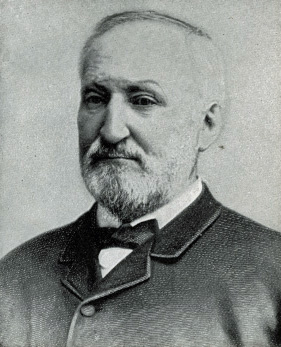 |
||||||||||||||||||||||||||
| former President Hayes introduced General Rosecrans he spoke with such a low voice, he could not be heard. He told his former soldiers, "I speak as loud as i can.". Someone in the crowd yelled they wanted to see him so Hayes lit a match and held it near the General's face which seemed to glow in the small light. A sustained roar of applause shook the tent as the soldiers gave their last public salute to their commander. | |||||||||||||||||||||||||||
|
The General's Health Was Getting Worse |
|||||||||||||||||||||||||||
|
The General resigned from the Treasury on June 19, 1893 and went home to California to raise wheat and fruit on Rancho Sausal Redondo. Since Carl and his family were living in the main house on the ranch, Anita and her father moved into the Redondo Hotel. Anita served as the General's hostess while writing children’s books and the General’s biography which she never finished. |
|||||||||||||||||||||||||||
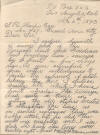 |
Many things on the ranch had been left to manage themselves while the General was in Washington and Carl in Mexico. The General had sold much of his original acres to finance his mining ventures. With him absent the boundaries became confused so the General convinced the government of Gardenia, a garden community built around the Los Angeles Redondo Railroad to split the cost of a new survey. |
||||||||||||||||||||||||||
|
When Carl noticed the General seemed lost or just didn't care any more, Carl added an addition to the house and brought the General to live on the ranch. Once again he seemed to regain his strength and enjoyed long walks through the fields and in the orchards. Carl's children, William and Carmelita, were a major entertainment. William remembered his grandfather fondly. When he was four, he visited his grandfather who told him "Boys don't wear curls" so William went home with his curls in a bag. William became a very good horseman and would ride out to see his grandfather who never failed to challenge him to remember who and what he saw to make the boy aware and to be observant. Both of the children delighted in the stories of Boney, the
General's war horse and the people and places he had been.
William was sure his grandfather never mentioned Grant. |
|||||||||||||||||||||||||||
| For the last five years of his life, he rarely left the ranch. Many of his old comrades continued to visit with him. | |||||||||||||||||||||||||||
| In February 1898 the General was looking forward to a visit from his namesake eight year old Rosecrans Toole of Montana. While on the journey, the boy became ill in San Francisco and died suddenly of the croup. The family took a three days to ease the shock for the General but he took the death very hard. He remained rigid for eleven minutes and they thought he was paralyzed. Making a heroic effort to control himself, the General seemed to rally and spoke of the child. The next day there was a complete physical, and for the first time mental collapse. He did not appear to recognize anyone and remained in that condition for two weeks. Just before his death he was entirely conscious and the end was peaceful. | |||||||||||||||||||||||||||
|
Taps for General Rosecrans |
|||||||||||||||||||||||||||
|
Two weeks after Rosecrans Toole died, a Los Angeles newspaper carried the headline "Taps" Sounds for Rosecrans. The General died March 11, 1898, on Rancho Sausal Redondo in Redondo Beach, California. His son Carl had been in Mexico but came home to see his ailing father. Carl and Anita were with their father when he died. That evening the Los Angeles City Council met and offered City Hall to the family to use to allow the remains of the General to lie in state. The San Francisco Call had his obit on March 12. On the 15th, the Call carried a follow-up with some of the messages of condolences from William McKinley, General Boyton and his godson, General D. S. Stanley. The General's body was moved on the 15th to lie in state in Los Angeles City Hall where the populace could pay its respects. Items of interest on display were the bullet ridden flag he carried in battle at Carnifax Ferry and a sword given to him by the people of Cincinnati with the words Rosecrans spoke to the people of Western Virginia: "My mission among you is that of a fellow citizen charged with the duty by the Government of restoring law and order." The Los Angeles Times March 15th, had a detailed article on the arrangements for moving his body. On the dead General's breast were pinned medals of the Grand Army, the Loyal Legion and the Army of the Potomac as well as the Laetare Medal. |
|||||||||||||||||||||||||||
|
|
|||||||||||||||||||||||||||
|
Drawing from the Los Angeles Times, March 17, 1898 |
|||||||||||||||||||||||||||
|
To avoid traffic problems, the casket of the General was quietly moved from city hall to the Cathedral where Right Rev. Bishop Montgomery began the service at 10 a.m. Following the pontifical requiem mass, Schmidt's requiem mass was performed in its entirety. During the mass, a procession was forming outside of the church. When the casket was lifted and carried to the hearse many more than would fit inside the cathedral fell into line. The Los Angeles Times gave the order of the procession Federal, county and city offices as well as scores of businesses closed to show their respect. School sessions were suspended and many children lined the streets along the route of the funeral procession. Eight active pallbearers consisted of four Union veterans and four Confederate veterans attended the casket. J.J. Alden of the Los Angeles Street Railway furnished 15 cars with special accommodations for the veterans. The procession to Rosewood Cemetery ended at 1 p.m. After Rt. Rev. Bishop Montgomery performed the sad last rites of the Catholic ceremony over the General's remains, the ceremony was turned over to the military. After all joined in singing the General's favorite hymn, Rock of Ages, Comrade A. C. Shafer led the military ceremony. He noted that even though the General's military record is bright with achievements of genius, he was a true friend of humanity. At the General's request two armies stood at his brier, one in gray and one in blue. They were invited to shake hands again on sacred soil. They were directed to the past as a panorama of great scenes to be forgotten. With fingers pointed heavenward, he bid them see one flag, one country with no South, no North, no East, no West.
Comrade Shafer read part of the last letter the General wrote dated
February 22, 1898 to his comrades in Union Veterans of Los Angeles
on the occasion of George Washington's birthday. He wrote, "to
our Brothers of the South, my heart goes out in greeting and
sympathy knowing well their dash and gallantry in the face of leaden
hail, and their indomitable courage in the face of overwhelming
obstacles. Happily recruited and bound to us in bonds of
closest sympathy, would grim war ever again assail us, there will be
none more ready 'with arms to strike and souls to dare as quick as
far' as those gray-clad heroes and their descendants of the land of
waving cotton and the palm. May an all wise Providence keep
you for many years to mingle thus happily together, and transmit to
those who follow us the lessons of fraternity, charity, and loyalty
to the flag of our great republic.
|
|||||||||||||||||||||||||||
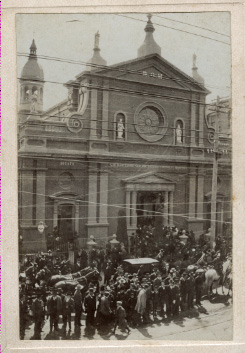 |
|||||||||||||||||||||||||||
| Rosecrans Hearse in front St. Vibiana's Cathedral in Los Angeles | |||||||||||||||||||||||||||
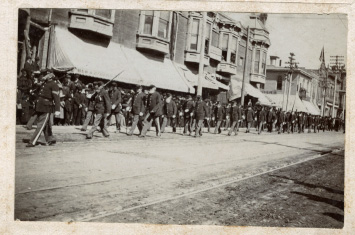 |
|||||||||||||||||||||||||||
|
Veterans in Funeral Cortege |
|||||||||||||||||||||||||||
|
Snaphots of General Rosecrans Funeral in Los Angeles from Tom Wolke |
|||||||||||||||||||||||||||
| A ROSECRANS MONUMENT: Dead Commander's Memory to be appropriately honored A Monument Association Suggested by his former Foes in Arms |
|||||||||||||||||||||||||||
| We have often said, General Rosecrans
was loved and respected by his men, feared by his enemies and
disliked by those in power above him. On March 25, 1898, this
article ran in the Los Angeles Times. Note it was a Confederate
veteran who suggested the monument. What became of it? |
|||||||||||||||||||||||||||
|
Major General
William Starke
Rosecrans |
|||||||||||||||||||||||||||
|
For over four years, Rosecrans remain in the vault is Rosedale
Cemetery in California.
Thousands visited
the vault to pay their respects. One old comrade who
had been with him in the Army of the Cumberland and a close friend
ever since, ask the Superintendent of the cemetery for permission to
look one last time at his fallen chieftain. He was granted
permission and when he saw the General's beloved features he fell on
his knees and cried bitterly.
According to the funeral parlor where his remains were taken in preparation for the trip to Washington very little had to be done to make his body ready. On May 8th accompanied by his son Carl F. Rosecrans, the General took his last train ride on the Sante Fe to Washington D.C. compliments of Senator Chauncey DePew. The officers of the Society of the Army of the Cumberland planned the ceremony. These men were Gen. D.S. Stanley, Gen. H. V. Boynton, Maj. John Truedale, U.S.A., Col. J. W. Steele, Maj. Charles E. Belknap, Gen. C. H. Gosvenor, Capt. J. W. Foley, Gen. A. Baird, Gen. T. J. Wood, Gen. W. A. Robinson, and Capt. A. P. Baldwin. On May 17, 1902, Major General William Starke Rosecrans was buried in Arlington Nation Cemetery by his comrades in the Society of the Cumberland. President Theodore Roosevelt spoke at his service. |
|||||||||||||||||||||||||||
|
Major General Rosecrans Interment in National Cemetery |
|||||||||||||||||||||||||||
|
|
Cavalry escorted Rosecrans Hearse
from Speare's Undertaking Chapel at 910 F Street, NW to Arlington Hotel where the Funeral Cortege went to Arlington National Cemetery. |
||||||||||||||||||||||||||
| Arlington Hotel - postcard | |||||||||||||||||||||||||||
|
From his Burial
in Arlington National Cemetery, May 17, 1902:
Speaker of the House of Representatives David B. Henderson
(Henderson had served under Rosecrans at the Battle of
Corinth): "I am not a soldier worshiper, if the only claims of
the soldier are marked by human graves or great victories to
command the devotion, respect and love of the country. The
soldier's aims must be analyzed and understood, and these must
show that he comprehended that for which he fought, and that
love of country rose above the ambition to be a great fighter.
The plow is better than the sword; the school-book is a better
guide than the work on military tactics; the builder is better
than the destroyer; the maker of homes is better than the maker
of graves, and yet if the work of the soldier is to protect the
Plow, the School, and the Home, he is entitled to the respect
according to the valor of his heart and arm. |
|||||||||||||||||||||||||||
|
President Theodore Roosevelt at Rosecrans burial: "Officer
and enlisted man stand at the bar of history to be judged not by the
differences of rank, but by whether they did their duties in their
respective ranks.. . . Doing the duty well is what counts."
General Charles H. Grosvenor of the House Committee and
served in the Army of the Cumberland: "No man would hesitate to go
where Rosecrans led.". |
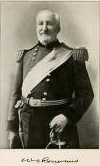 |
||||||||||||||||||||||||||
|
Senator Foraker who served under Rosecrans at Stone's
River: "It was his sound judgment, undismayed bearing,
incomparable courage and fearless exposure of his own life that
inspired his troops, and gave them the renewed courage and hope
that finally won the victory. ... On that bloody field, General
Rosecrans gained confidence and admiration of every man in the
Army of the Cumberland down to the humblest private in the
ranks. From that time forward that army was literally his to
command." |
|||||||||||||||||||||||||||
|
Society of the Army of the Cumberland |
|||||||||||||||||||||||||||
| Society of the Army of the Cumberland held its Thirty-third meeting in Chattanooga September 19-20, 1905. The General's comrades discussed the pros and cons of an equestrian statue of a monument to honor their leader. Should it be in the cemetery where a plank marked his grave or in a park in Washington for everyone to see? The minutes show the heated discussion and the final vote which sent the decision to committee. So far I have not discovered why the statue was never built. Is the marker in Arlington from his comrades or his family? | |||||||||||||||||||||||||||
|
Few man have been higher regarded by the privates he commanded or
the generals of the opposing army. |
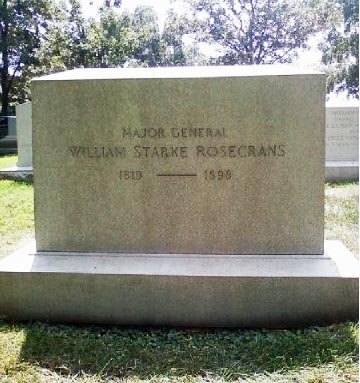 |
||||||||||||||||||||||||||
|
Carl Frederick was interested in mining and railroads and worked with his father in California and Mexico. He married Lillian and they had a daughter Carmelita, who married a Ewing, and a son William S. Rosecrans. Carl also started his father’s biography but never finished it. Carl had taken over running the family businesses after his father's health began to fail. Carl continued running the family businesses after his death. Anita learned stenography and became the secretary for her brother-in-law, Governor Toole. When she died in 1903, they closed the government offices in her honor. The biography she started of her father was also never finished. |
|||||||||||||||||||||||||||
|
Community Honors Hometown Native |
|||||||||||||||||||||||||||
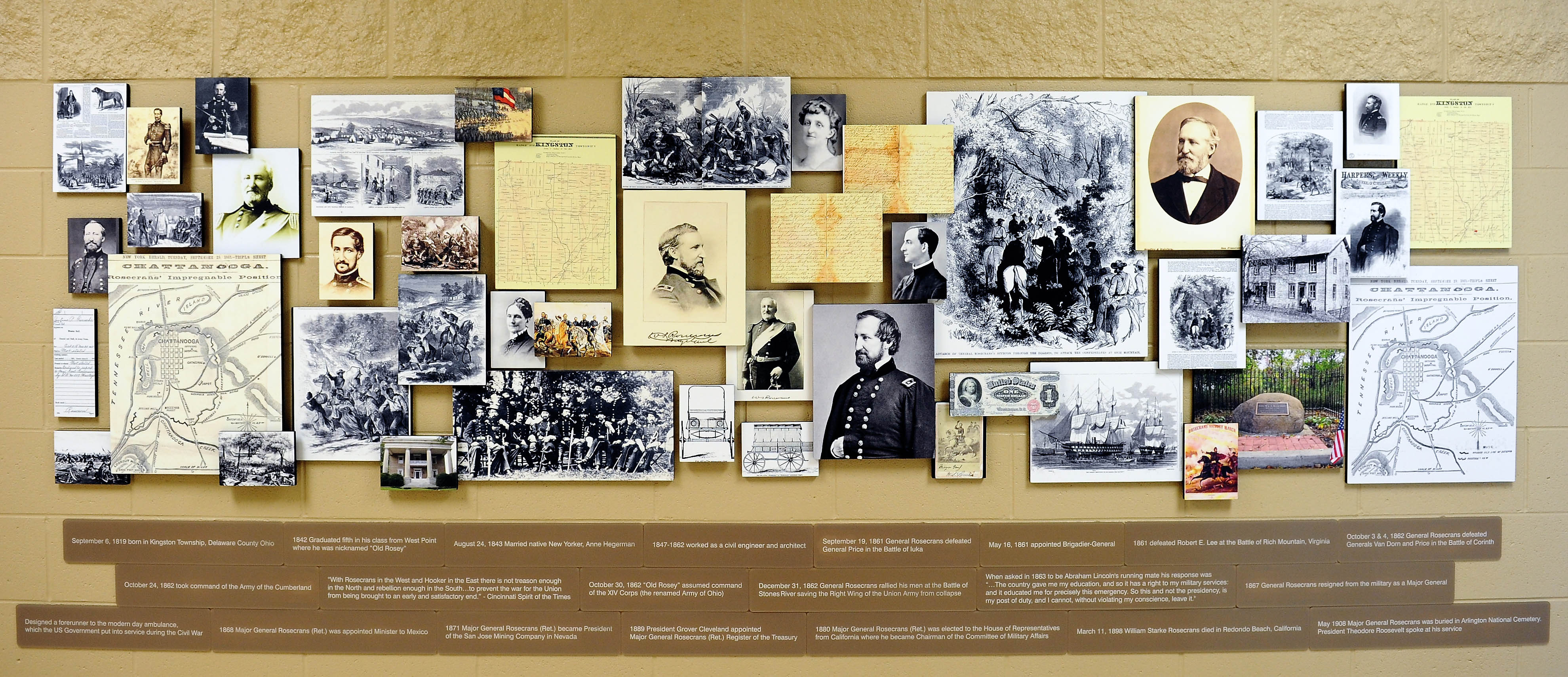 |
|||||||||||||||||||||||||||
|
Rosecrans Display Wall in the General Rosecrans School. Photo by Lenny Lepalo |
|||||||||||||||||||||||||||
| In October 2009, the Big Walnut Local Schools Board named the new school General Rosecrans Elementary School in his honor. The school located at 301 South Miller Drive in Sunbury was dedicated on August 23, 2010. | |||||||||||||||||||||||||||
| A Statue to Honor this Great Man | |||||||||||||||||||||||||||
|
Major General William Starke Rosecrans is the only upper echelon Civil War general without a statue to honor him. This oversight needs to be rectify as Ohio celebrates the Sesquicentennial of the Civil War. When the Rosecrans Headquarters committee of the Big Wlanut Area Historical Society disbanded, Bill Comisford became chairman of committee of members of the Big Walnut Area Historical Society who continued to raising money to build an equestrian statue of the General which will be put on the glacial errata on Sunbury Square. |
|||||||||||||||||||||||||||
|
|
 |
||||||||||||||||||||||||||
| Goto Part 1: Genealogy, Ancestors and Youth | |||||||||||||||||||||||||||
| Goto
Part 2: Cadet at
West Point, Corps of Engineers, Marriage, Religious Conversion |
|||||||||||||||||||||||||||
| Goto
Part 3: Cincinnati
as a civilian, Architect and Consulting Engineer, Inventor |
|||||||||||||||||||||||||||
| Goto Part 4: The Civil War | |||||||||||||||||||||||||||
| Part 5: Post Civil War | |||||||||||||||||||||||||||
| Goto
Part 6: Equestrian Statue of William S. Rosecrans on his
horse Boney
|
|||||||||||||||||||||||||||
| Bibliography | |||||||||||||||||||||||||||
Site Navigation Guide: The source is blue, learn more is in italics Click on photos to enlarge. Use BACK to return to this page © by Polly Horn for Big Walnut Area Historical Society. Contact Polly |
(05/26/2017) |
||||||||||||||||||||||||||
